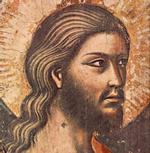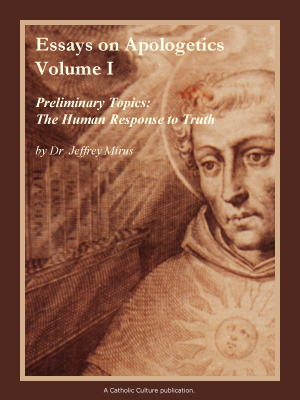A 'Burning Bush' and 'Father' of Spiritual Wisdom
by Archbishop Cosmo Francesco Ruppi
No one could have imagined that a descendent of the Dukes of Onesti, lords of Ravenna and of the entire region, would have left the gilded rooms of his stately home for the most absolute austerity, entering history not only as one of the greatest reformers of the Benedictine Order but also as Founder of the Congregation of Monk Hermits of Camaldoli known as the Camaldolese, an Order that has given the Church two great Pontiffs, Pius VII and Gregory XVI, as well as a whole array of blesseds and saints.
Yet from his youth, Romuald had been strongly attracted to the consecrated life. Wealth and the comforts of the well-to-do sickened him.
Indeed, he had an unquenchable thirst for silence, austerity and sacrifice, to the point that he came to choose an eremitical life not as a wayside hermit, but within a duchy. The duel, well known to his biographers, in which he was obliged to second his father, who killed his adversary in this chivalrous conflict, was in all likelihood the radical turning point in Romuald's life.
He was overwhelmed by the event. He felt that he was to blame and entered a monastery near Ravenna to make reparation.
But this did not suffice. He was stirred by the longing for an even more perfect and austere life than that of the Benedictines, and it was this desire, as the famous St Bruno of Querfurt noted, that gave birth to his project of becoming a "father of spiritual hermits".
Absolute solitude
Romuald left the Benedictine monastery and moved close to Venice. Here he became a master of solitude and a spiritual guide.
He then went to Spain with his teacher, Marinus, and the Doge of Venice, Peter Orseolo [who abdicated because he also wished to enter a monastery], not to live in a hermitage, however, but rather to dwell in an isolated place. Romuald stayed there for about 10 years, until he learned that his father, moved by grace, had retired to a Monastery at Ravenna.
Thus, he left Spain and joined his father, who was having great difficulty in pursuing the monastic life.
The Emperor Otto III appointed him abbot of the celebrated Benedictine monastery of San Apollinare in Classe and then at Pereum near Ravenna, and asked him to introduce the monastic reform to achieve an austere way of life.
One after another, new monasteries sprang up oriented to the Benedictine Rule but completely immersed in austerity and solitude, until the foundation of Camaldoli, the monastery that was to be the symbol of St Romuald's reform and would give its name to the Carnaldolese Order.
Carnaldoli, a centre of outreach
A benefactor named Maldoli offered Romuald a piece of land in the mountains near Arezzo. There in the campo di [field of] Maldoli (Camaldoli) the monastery came into being that was to become the motherhouse of the future Camaldolese Order, which today has few but important monasteries bound to St Romuald.
Camaldolese monks wear a white habit — some called anchorites dwell apart from the others — and live in total austerity; others, who also live an austere form of life, gather at the celebration of the Eucharist and to praise the Lord.
Camaldoli has become famous in recent decades because it accepted and nurtured the leaven of the new Italian democracy and because noble spirits of Italian Catholicism assembled within its walls on several occasions and gave life to the celebrated Camaldolese Rule, which actually forms the basis of the Italian Constitution.
Carnaldoli has also been the venue of well-known ecumenical assemblies, biblical and theological gatherings, and more recently, meetings for reflection on the European Constitution.
Camaldoli has a special attraction for visitors on spiritual pilgrimage and for those who seek a powerful experience of God in solitude and silence.
Enraptured by the Lord
St Peter Damian, to whom we are indebted for a Life of St Romuald, notes that the saint was enraptured by silence and enamored of God: "Contemplation of God enraptured him so ` forcefully that, almost blinded by tears and burning with an indescribable fire of love for God, he would cry out, `Dear Jesus, peace of my heart, ineffable desire, sweetness and gentleness of the angels and saints..."'.
The son of Duke Sergius of Ravenna, immersed as he was in silence, discovered that this ability to be still before the Lord opens the heart and unites us with God, who speaks in silence and solitude.
Interestingly, St Romuald loved Moses and identified himself with the burning bush, to draw from it an incentive for his life and advice for the brothers who accompanied him in the monastic life.
The theology of restlessness
Romuald spent his whole existence on the move, with lengthy periods in solitude and silence. His journeys were not for military or cultural reasons but were prompted solely by the desire to live in solitude, to reform monasteries and communities and to restore to them their primitive observance.
This is also the reason for the Carnaldolese foundations and especially for that spiritual restlessness which is not the product of uncertainty or psychological instability but rather, of the desire to dedicate oneself to God alone.
Indeed, one can apply to Romuald, as that very fine observer and biographer St Peter Damian suggests, a theology of restlessness, founded on the primacy of silence and prayer. At a time when monks were giving up because of the length of the Office and the countless hours dedicated to the choir, St Romuald preferred solitude and silent prayer, to the point that this biographer credits him with saying these provocative words: "It is better to put one's heart into reciting a single psalm than singing 100 psalms with the voice!".
Interiorization of the spiritual dimension, the primacy of solitude and contemplation, slow penetration of the Word of God and calm meditation on the Psalms are the pillars of Camaldolese spirituality, which St Romuald gives as the essential core of his Rule.
Hermit and cenobite
The contrast between cenobite and hermit, between monastic life and eremitical life, converged in St Romuald, and it found in him a synthesis that was not contradictory but complementary. He did not reject monastic life; nor did he negate the value of the cenobitical life as he deepened and firmly rooted in the Church a new form of eremitical life whose top priority was the silence of God and prayer to God as the way to new citizenship in the Church.
There are not many monks today who live his legacy. However, in his holy invitation to silence, prayer and inner solitude we can find the ability to make ourselves, as the saying goes, "monks in the world", enriching communities of contemplative spirits that give a sign of that world, both distant and close, which is God's world.
St Romuald's maxim, "Destroy yourself and live only in God", is useful and salutary for all people of all times.
This item 6775 digitally provided courtesy of CatholicCulture.org






